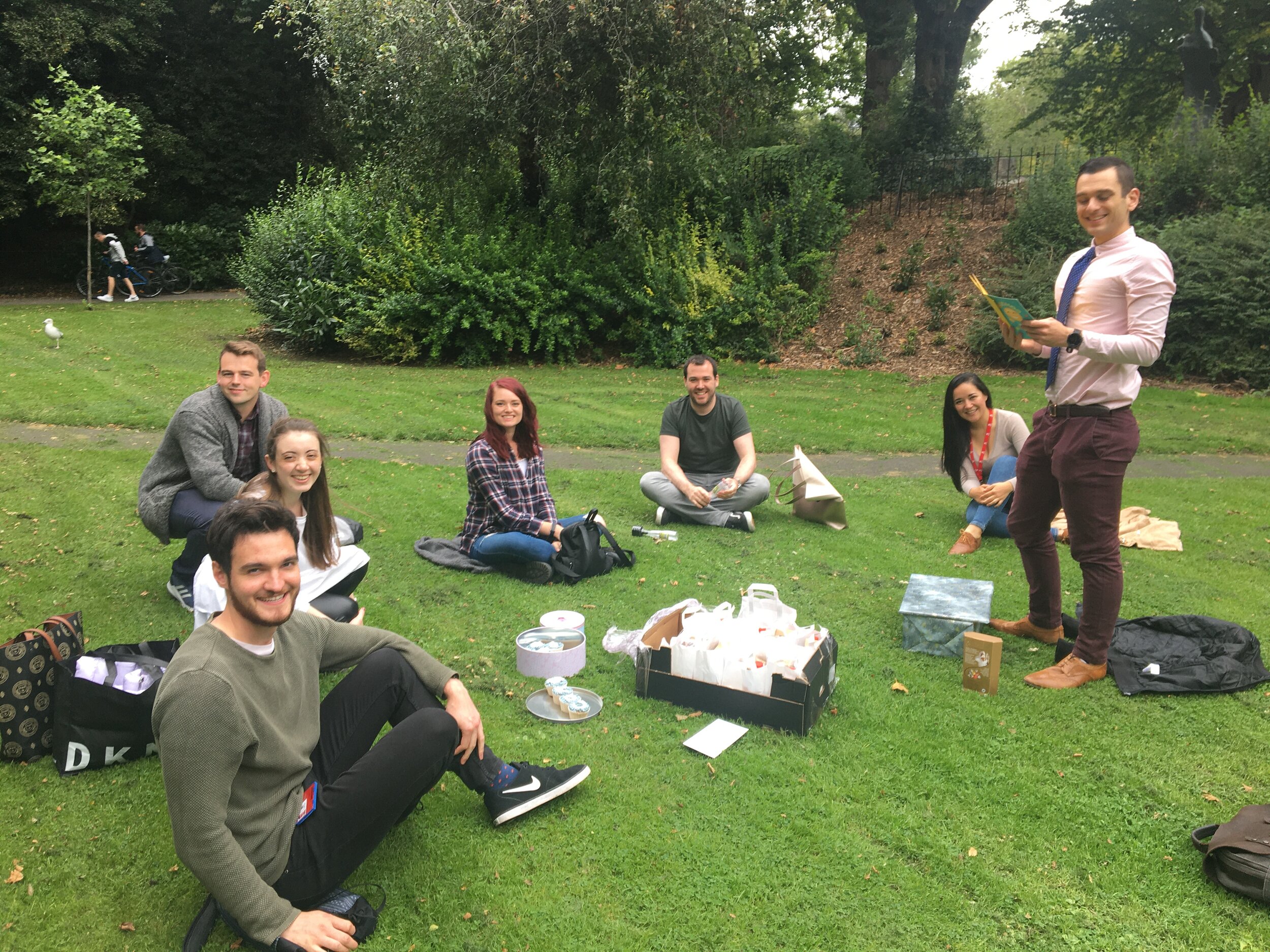Shannon Cox from the Curtis Clock lab won best PhD presentation in the School of Pharmacy and Biomolecular Sciences Christmas Seminar Series. Although there is no doubt that Shannon won this award due to her hard work and outstanding research to date, it helped that she also has an unparalleled ability to rhyme scientific words and data. Well done Shannon!
Here is her poem :) pretty impressive alright
Circadian Disruption Alters the Inflammatory Response
in Lung Fibroblasts
By Shannon Cox
T’was the week before Christmas, when all through RCSI
Every person was stirring, though not the PI’s.
Data was collected and calculated with care,
In dire hopes that significance would surely be there.
The Clock Lab were wrapping up, opting for pints instead,
While visions of high impact publications danced in our heads.
And I in my lab coat, with fibroblasts in hand,
Had just finished experimenting, here’s what I understand:
The molecular clock governs rhythms, BMAL1 really matters,
And when it’s missing from cells, our rhythms take a batter.
The consequences of this are too numerous to list,
But effects on respiratory immunology are too important to miss.
Fibroblasts have a clock and are important immune regulators,
By secreting and responding to cytokines, chemokines, they’re decent
mediators.
Dyregulation is associated with numerous pathologies,
Including those associated with respiratory immunology.
My first aim is this, to delete the clock in lung fibroblasts,
Activate with IL-1β
, metabolic differences are probably vast,
To establish the effect this has on chemokine production,
And subsequent immune cell recruitment, here’s my deduction:
Firstly we obtained lung fibroblasts, and by the western you’ll see,
Bmal1 is missing from the knockouts, a great start to the PhD.
Through Lumicycle analysis we confirmed rhythms were gone,
Now that this was confirmed, experiments can carry on.
Firstly for aim 1, a qPCR was carried out,
Chemokine gene expression increased in the Bmal1 knockouts.
But in the Wild Types Cxcl5 and Ccl5 gene expression was higher,
Demonstrating our hypothesis was not a miss-fire.
To investigate effects of differential chemokine production,
We carried out a transwell migration assay, here are the instructions:
Wild Type and Knockout fibroblast supernatants were put a well,
We obtained inserts and in them we placed bone marrow cells.
24 hours later we harvested the cells which had migrated through,
And counted them using flow cytometry, we learned a thing or two.
In IL-1β knockout supernatants we saw increased cell recruitment,
Showing the importance of the fibroblast clock in immune cell movement.
Finally onto aim 3, a mechanism must be explored
As an immunometabolism lab, the seahorse cannot be ignored.
A glycolysis rate assay was carried out,
And indicated increased glycolysis in the Bmal1 Knockouts.
A western blot confirmed what we saw on the seahorse,
Increased HIF-1a and PKM2 observed, our results reinforced!
Higher expression in untreated and IL-1β treated Knockouts,
Overall increased glycolysis, dependent on Bmal1 no doubt.
But is glycolysis important for chemokine production?
Indeed it is, inhibition leads to chemokine reduction.
By pre-treating with the glycolysis inhibitor 2-DG,
mRNA expression significantly decreased, I was very happy to see.
To double check my results, what the seahorse proposed,
We used media supplemented with glucose vs galactose.
Galactose inhibits glycolysis and forces OxPhos,
Once again chemokine gene expression took a big loss.
A quick summary is needed to conclude my presentation,
Lung fibroblasts increase glycolysis upon Bmal1 ablation,
Increased immune recruitment and differential chemokine expression,
Resolution or pathology? Now that’s the next question!
I’ll wrap it up here, I hope it wasn’t a drag,
I just want to say thanks to everyone in my lab,
And since time is probably getting a little bit tight,
Happy Christmas to all and to all a goodnight!









